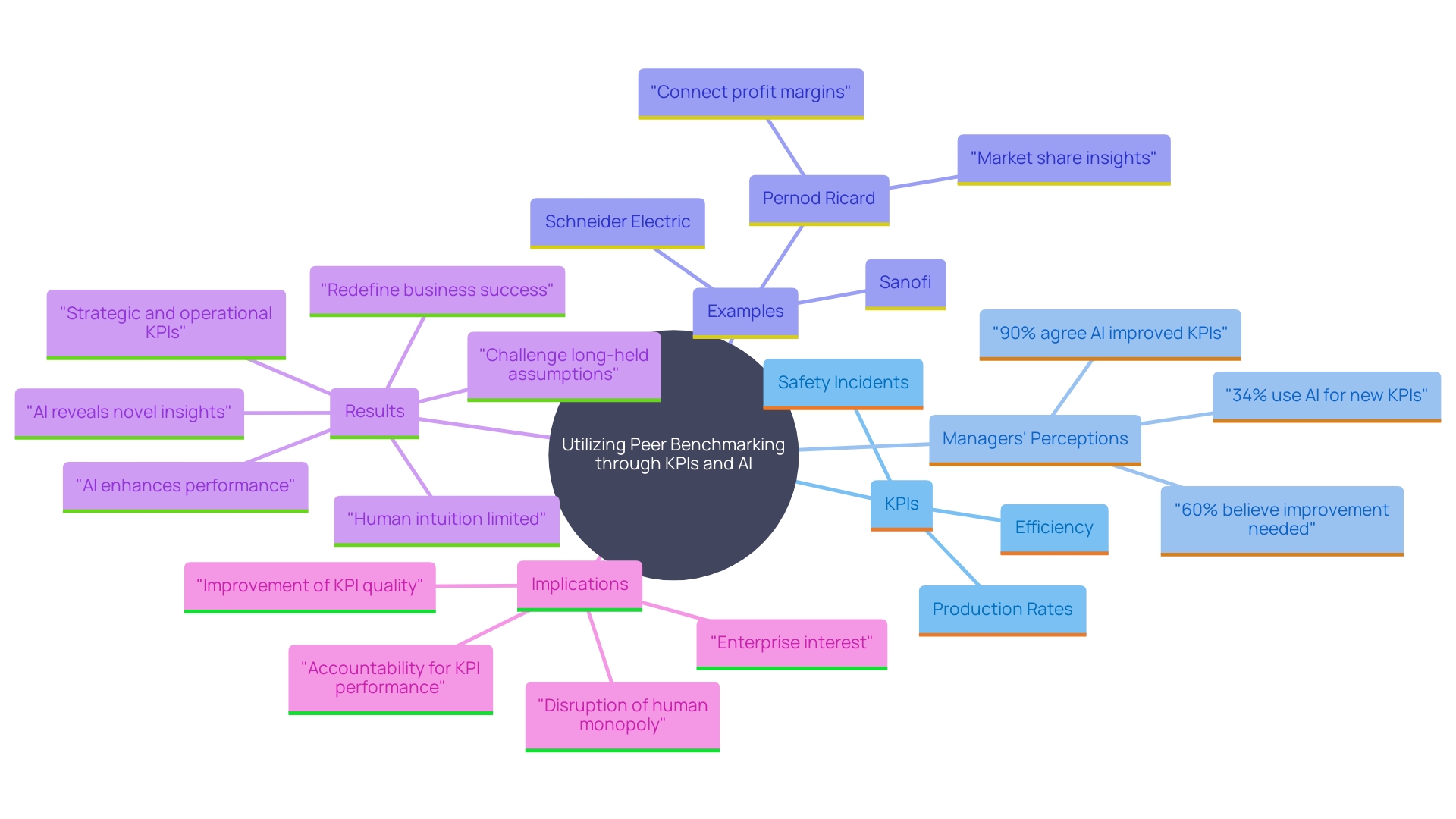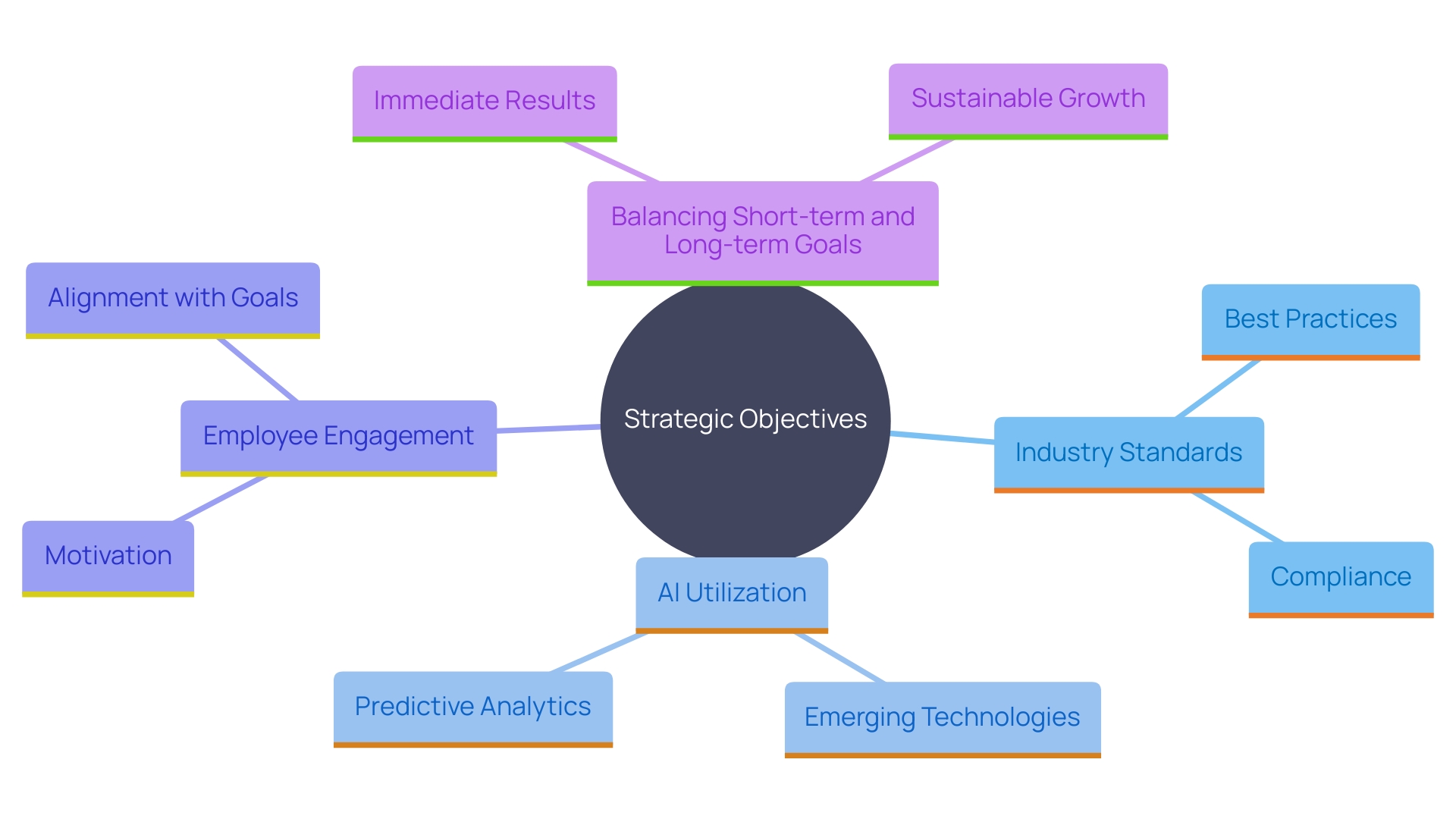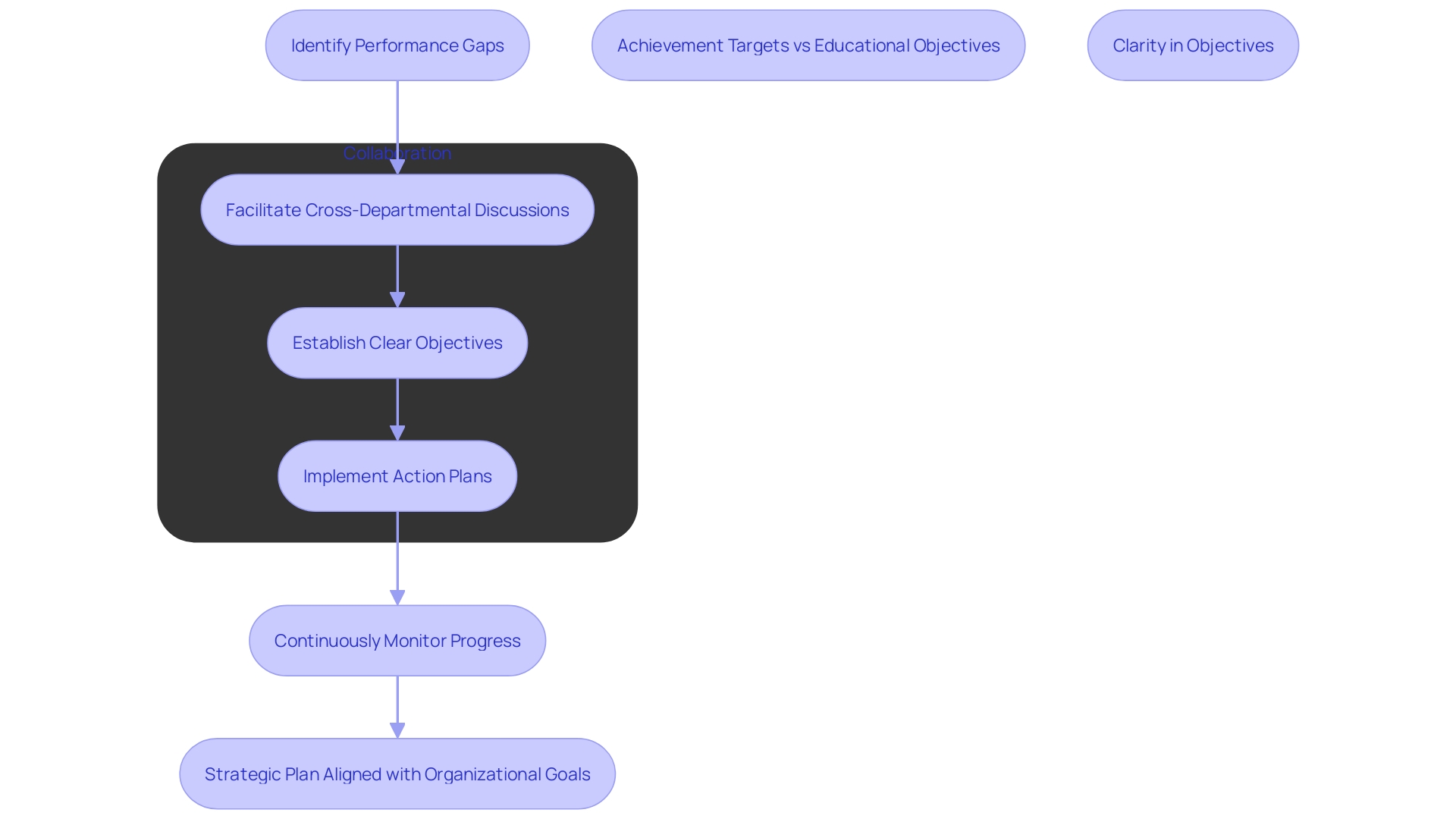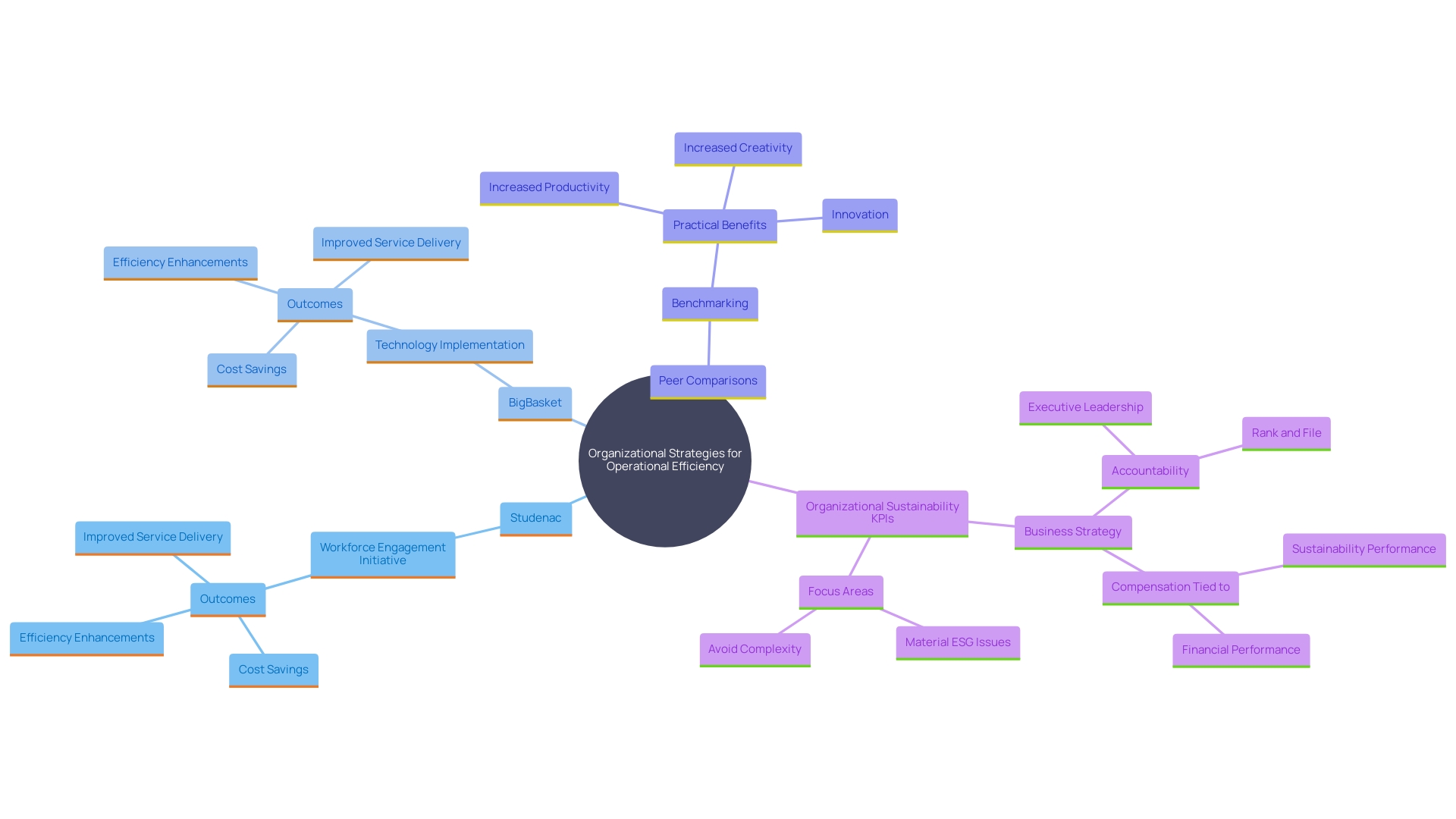Introduction
In an increasingly competitive business landscape, peer benchmarking emerges as a pivotal strategy for organizations aiming to elevate their performance and profitability. By systematically comparing key operational metrics with those of industry peers, businesses can uncover invaluable insights into prevailing standards and best practices. This comparative approach not only highlights areas for improvement but also helps set informed, strategic goals, thereby driving both accountability and optimal resource allocation.
Industries ranging from utilities to tech giants illustrate the transformative impact of benchmarking, showcasing how it can lead to more consistent outcomes, data-driven decision-making, and substantial performance enhancements. As companies seek to align their operational capabilities with business needs, the role of peer benchmarking in fostering sustainable growth and profitability becomes increasingly indispensable.
The Importance of Peer Benchmarking
Peer comparison acts as a revolutionary instrument for entities aiming to improve their performance and profitability. By comparing operational metrics with those of similar companies, businesses gain critical insights into industry standards and best practices. This comparative analysis enables organizations to pinpoint specific areas for improvement and establish informed, strategic goals.
Utilizing collective comparative data can significantly enhance responsibility and resource distribution. For instance, utilities utilize performance comparisons to meet customer expectations, manage rates, and adhere to stringent regulations. Such data-driven insights allow for optimizing resource allocation, ensuring investments in areas with the highest impact. Furthermore, performance evaluation aids informed decision-making by supplying crucial data to make evidence-based choices, moving away from guesswork.
Monitoring and controlling variability is another crucial benefit. By measuring key process parameters, organizations can achieve more consistent and predictable outcomes, balancing workloads effectively. This method is emphasized by the achievements of leading firms, which conduct over 500 tests each year, demonstrating that thorough comparison can lead to significant enhancements in results.
'Incorporating profitability metrics into evaluation processes further aids development teams and investors in conducting market and project feasibility analysis.'. Grasping the complete view of operational effectiveness aids in recognizing strengths and weaknesses across departments, facilitating the execution of strategies to enhance returns. As evidence indicates, companies with strong alignment between business needs and technology capabilities grow 2.4 times faster and have twice the profitability of their peers, highlighting the value of solid evaluation practices.
In summary, peer comparison not only offers a structure for monitoring objectives and enhancements but also supplies entities with the essential resources to manage trade-offs and enhance overall effectiveness efficiently.
Identifying Performance Gaps
To efficiently utilize peer benchmarking, entities must first recognize gaps in effectiveness by examining key success indicators (KPIs) and metrics that are vital to the business. This involves a detailed assessment of KPIs such as efficiency, production rates, safety incidents, and financial metrics against peer data to pinpoint discrepancies. For instance, a global survey revealed that 60% of managers believe they need to improve their KPIs, but only one-third are utilizing AI to create new KPIs. Strikingly, 9 out of 10 managers within that group agree that their KPIs have been improved by AI. Companies like Pernod Ricard have demonstrated the benefits of using AI to connect profit margins and market share, which were previously siloed. AI can uncover new insights by examining and linking data, enabling companies to recognize hidden factors influencing success and create new KPIs that can assist in steering executive decision-making. This foundational analysis sets the stage for targeted improvement initiatives, addressing inefficiencies and keeping the entity competitive.

Setting Realistic Goals
Once disparities in results are recognized, the following phase is to establish practical, quantifiable objectives that are in line with industry standards and customized to the entity’s distinct context. By establishing clear objectives, businesses can create a roadmap for improvement that not only aims to meet industry standards but also drives sustainable growth and profitability. According to recent studies, leading companies are leveraging AI to improve and redefine effectiveness (See Exhibit 1), challenging long-held assumptions about business success drivers. AI can delve into complex data, revealing novel insights and helping establish more reliable and dynamic KPIs that better predict strategic outcomes. For example, in the case of Tokopedia, AI was instrumental in understanding the causal relationships between operational drivers and strategic outcomes, ultimately enhancing the value of transactions on its platform.
Additionally, the goal-setting process should involve a productive discussion about how employees' work aligns with the organization's strategy and their individual purpose. Research indicates that 70 percent of employees define their sense of purpose through their work, which is a leading driver of performance and productivity. It's vital to steer clear of establishing targets in isolation and instead engage employees in regular conversations about business aims. This approach encourages motivation and ensures that objectives are interconnected with the larger organizational strategy. Furthermore, objectives should balance short-term achievements with long-term results to prevent the focus from shifting solely to immediate gains at the expense of sustainable growth. Setting these clear, strategic objectives will assist businesses not only in improving effectiveness but also in fostering a culture of ongoing enhancement and innovation.

Action Plans and Implementation
Effective benchmarking goes beyond identifying gaps; it necessitates the creation of strategic action plans that address the identified performance issues. Organizations should facilitate cross-departmental discussions to identify and address knowledge gaps, as seen in the case of the City of Thunder Bay. This collaborative approach helps in sharing and retaining knowledge, which is crucial for the successful implementation of action plans.
Establishing practical and timely objectives is essential. Thunder Bay’s experience underscores the importance of not underestimating the time required to accomplish tasks, as production delays can occur when there is a lack of agreement on key messages. Consequently, objectives should be clear and attainable, aligning with both short-term operational needs and long-term strategic aims.
Continuous monitoring and adjustment of these plans are critical. Employing frameworks such as Integrated Business Planning (IBP) can assist in aligning different business functions towards a shared objective, improving collaboration and visibility throughout the organization. This alignment ensures that resources are allocated effectively, responsibilities are clearly assigned, and timelines are established to keep initiatives on track.
Furthermore, differentiating between achievement targets and educational objectives can direct efforts towards lasting results instead of immediate benefits. Performance objectives focus on achieving specific targets, while learning aims emphasize the process of gaining knowledge and skills. This method encourages a culture of ongoing enhancement and flexibility, which is essential for attaining long-term objectives.
Ultimately, a strategic plan should clearly articulate what the entity aims to achieve, for whom, and why it matters. It should recognize essential success measures and detail the required actions to create a substantial effect, ensuring that the entity stays aligned with its achievement goals.

Benefits of Peer Benchmarking
Peer comparison offers more than just improved results; it provides a strategic route to considerable cost reductions, better operational efficiencies, and substantial revenue growth. By sharing benchmarking scores, organizations can identify improvement areas and reinforce high-performing practices, leading to high-quality outcomes. Establishing clear, measurable standards allows for tracking progress, making data-driven decisions, and fostering a culture of continuous improvement.
For instance, M&T Bank's application of Clean Code standards throughout its development teams demonstrates how establishing and following high criteria can preserve software quality and operational efficiency. Similarly, in healthcare, segmenting operations and consistently analyzing data helps identify performance gaps and set SMART goals, ensuring competitive and dynamic service delivery.
Moreover, fostering a culture of continuous improvement encourages teams to strive for excellence and adopt innovative practices. This focus on innovation and excellence is crucial for long-term success, as evidenced by the increasing adoption of AI-powered forecasting in marketing attribution platforms, which has risen from 13% to 29% in just a year.
In conclusion, the strategic use of peer comparison can transform organizational practices, leading to sustained growth, efficiency, and competitive advantage.
Challenges and Considerations
While peer benchmarking offers significant advantages, entities must also navigate several challenges. These include the availability and quality of data, ensuring the comparability of metrics, and overcoming internal resistance to change. Approximately 70% of teams spend six or more months transforming data into a usable state, highlighting the complexity of data curation. Furthermore, entities frequently depend significantly on consultants, with 50% of life sciences teams involving at least four consultants to combine various datasets and perform analyses.
To address these challenges, it is essential to develop a proactive and timely response mechanism. Forming collaborations with comparable entities can aid these initiatives and promote a continuous conversation with pertinent leaders to enhance their comprehension of the domain. A commitment to fostering a culture that embraces data-driven decision-making and continuous improvement is crucial. As highlighted by data management experts, understanding and applying data metrics are vital for responsible stewardship and trust in data.
Moreover, prioritizing the development and adoption of open data metrics can drive broader development and ensure the responsible use of data as a public asset. By periodically assessing data monetization approaches and concentrating on process enhancement, entities can surmount obstacles and realize the complete potential of peer comparison.

Case Study: Real-World Applications
Analyzing practical uses of peer comparisons shows how organizations have effectively adopted these strategies to improve results. For instance, Studenac, Croatia’s largest retailer by store count, utilized a unique workforce engagement initiative that has significantly optimized their operational efficiency. This program, which ran from June to September, involved office-based employees stocking shelves, operating cash registers, and assisting customers in physical locations. This initiative provided managerial employees with firsthand insights into the daily routines of frontline staff, leading to improved worker wellbeing, retention, and performance.
Similarly, BigBasket, a leading online grocery service, leveraged Amazon SageMaker to train their computer vision model for FMCG product identification. This implementation reduced training time by approximately 50% and cut costs by 20%, showcasing the effectiveness of performance evaluation in achieving operational excellence. These case studies underscore the practical implications of benchmarking and the tangible results that can be achieved, such as cost savings, efficiency enhancements, and improved service delivery.

Conclusion
Peer benchmarking emerges as a critical strategy for organizations aiming to enhance performance and profitability in a competitive landscape. By systematically comparing operational metrics with industry peers, businesses can identify performance gaps, set realistic goals, and develop actionable plans that drive improvement. This process not only fosters accountability but also enables informed decision-making, ensuring that resources are allocated effectively to areas with the most significant impact.
The benefits of peer benchmarking extend beyond performance enhancement. It lays the groundwork for sustainable growth and innovation by establishing clear standards and promoting a culture of continuous improvement. Organizations that actively engage in benchmarking are better positioned to adapt to market changes, optimize operational efficiencies, and achieve substantial cost savings.
The case studies presented illustrate the real-world applications and tangible results that can stem from effective benchmarking practices.
As organizations navigate the challenges associated with data quality and comparability, a commitment to data-driven decision-making and collaboration will be essential. By fostering an environment that values ongoing improvement and embraces innovative practices, organizations can unlock the full potential of peer benchmarking, ensuring they remain competitive and successful in their respective industries.




